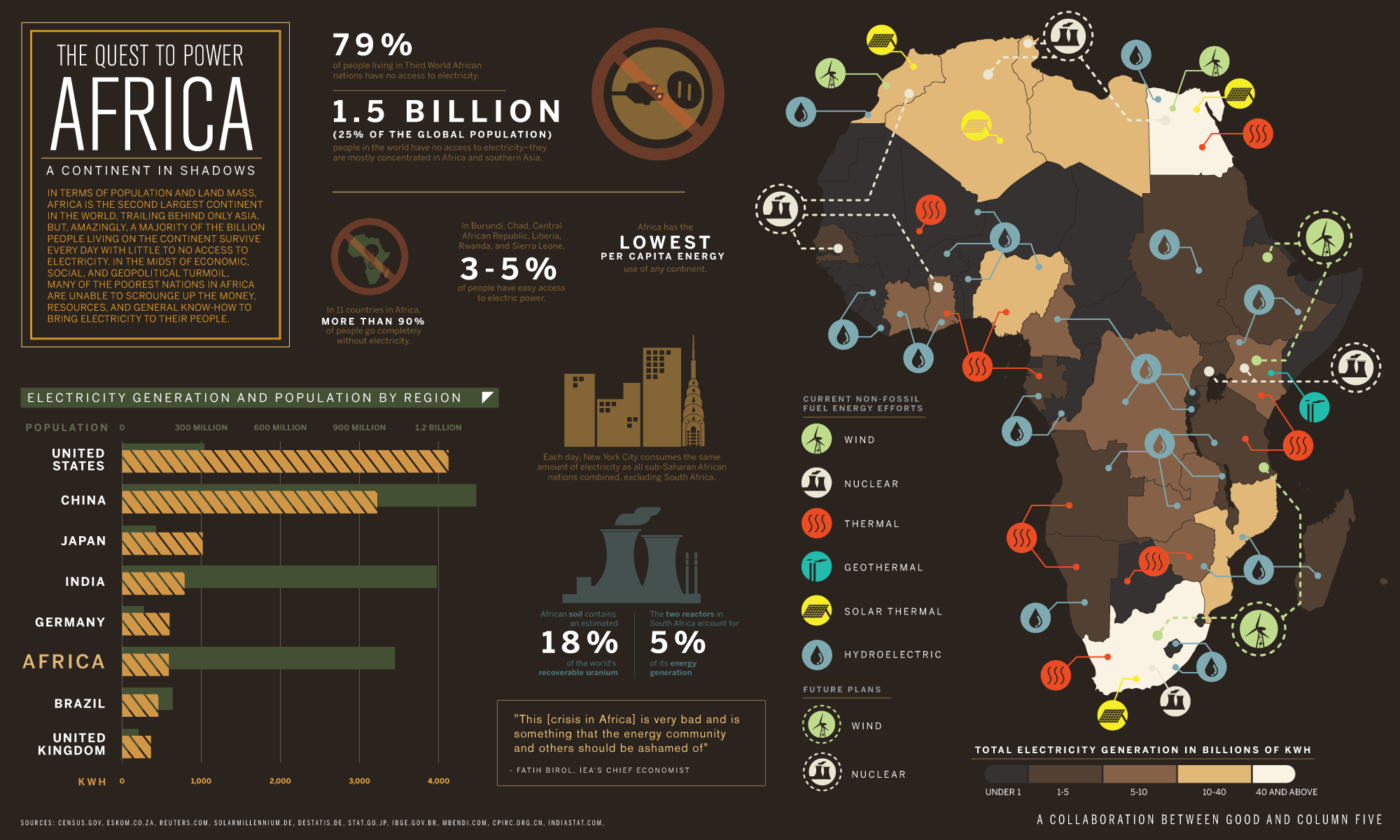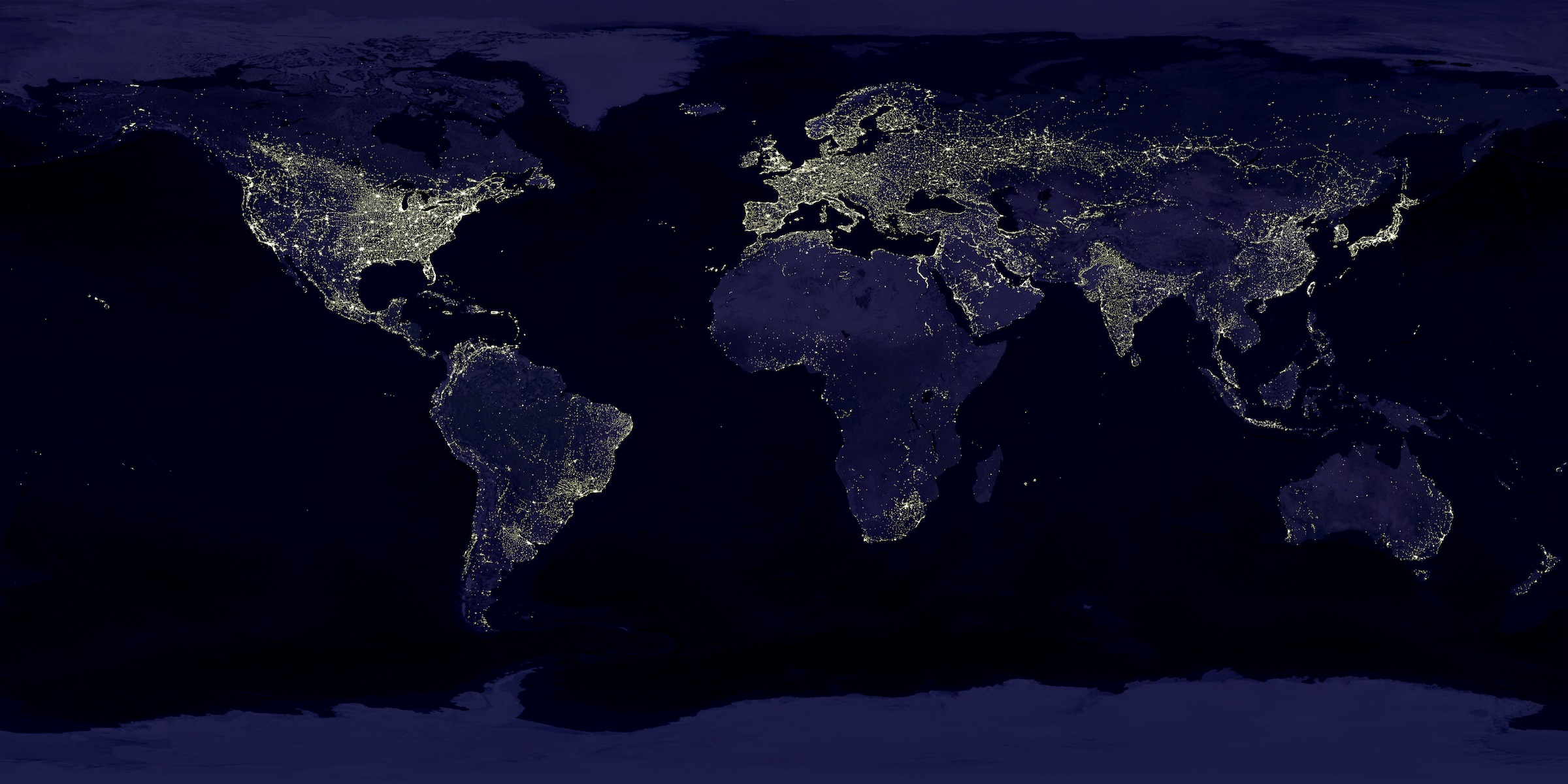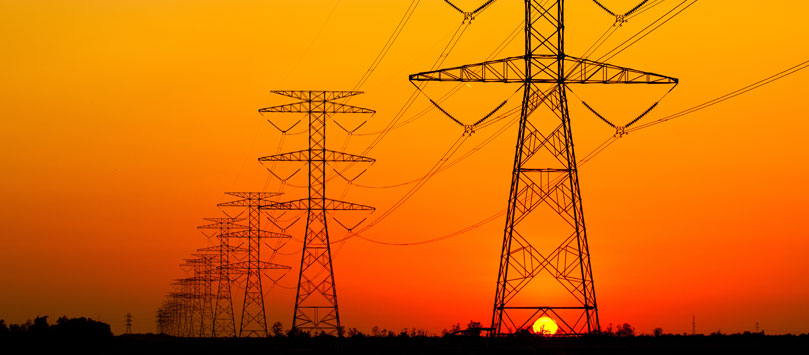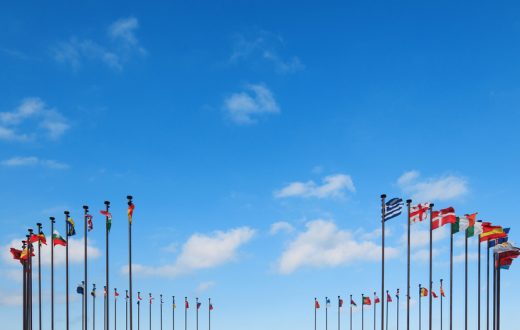A surge in American solar power startups is helping to bring off grid energy to homes across Africa. As covered in a recent article in The New Yorker, things that first world countries take for granted – including refrigerators and domestic plug sockets – are now accessible in more of the smaller towns across Africa. Medical clinics can safely store yellow fever vaccines, street vendors can sell refreshing ice-cold drinks and anyone who has a cellphone can charge up their battery at home, instead of having to walk to the nearest big city to do it.
The current state of affairs in numbers
It could come as a shock to many of us, but almost the same number of people live without electricity today as when Thomas Edison invented the lightbulb and over 50% of them live in sub-Saharan Africa. According to a report released by the World Bank, if we continue to tackle electricity issues at the same rate over half a billion people still won’t have electricity by 2040.

Credit : Good.is
This is why trends in off grid startups are so important and it doesn’t take much thought to understand why the current boom relates to solar power, as one thing Africa has plenty of is heat and sunshine. Even so, the availability of off grid solar power is really only the first step. The key to harnessing the full power of renewable energy is to then manage it efficiently.
Getting the most out of the African sun
While solar power is by no means lacking in Africa, solar power off grid installations can only do so much to ensure that everyone across the continent can manage that energy efficiently. Building contractors have their part to play in maximizing the energy harnessed from the sun. Low-E Glass can filter light into interiors and keep unwanted heat out at the same time.
Although there’s an added expense involved in the use of Low-E Glass, its installation can help reduce the need for air-conditioning and thus free up the solar energy harnessed to power other equipment and appliances that are more useful, like refrigerators. A cheaper alternative to Low-E Glass would be to install exterior and interior shades to help keep the heat out of buildings.
Saving energy
What may seem like common sense to those of us who have been used to having electricity on tap since we were born, is not so cut and dry for someone new to the concept. As each small town gains access to off grid energy in Africa, community education is going to be important. If the solar power grids have been installed to power an entire village, each family will need to employ a degree of consciousness over the amount of energy they consume on a daily basis by turning lights off when not needed, for example.
Electrical contractors should also consider the strategic placement of lightbulbs in houses to ensure that the fewest number of bulbs are used to light each abode. Energy star rating lightbulbs should be made readily available on the market and consumer education should be offered so that each family understands the importance of using energy star rating light bulbs as opposed to standard ones.

Using appliances with care
On a final note, refrigerators are notorious for using high levels of energy, but this is easily rectified when temperatures are set correctly. The ideal fridge temperature should range between 4 to 5 degrees Celsius. Freezers should be set to anywhere between -15 to -18 degrees.
What’s clear is that electrifying Africa is one of the greatest development challenges that we face in the 21st century. Not just because we need to find ways of getting the energy to each and every home, but because we also need to ensure that the country is equipped to manage its new found energy as efficiently as possible.
|
About the Author : Now working as a writer, Jackie started her career as a foreign aid worker, but after becoming a mom refocused and decided to spend more time with her family. When she’s not writing, she volunteers for a number of local mental health charities and also has a menagerie of pets to look after.







